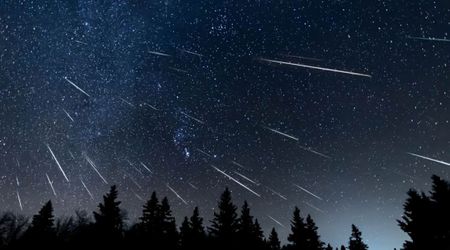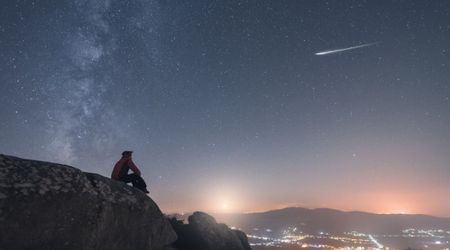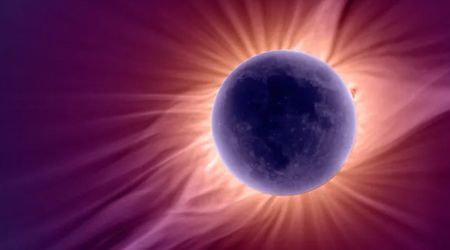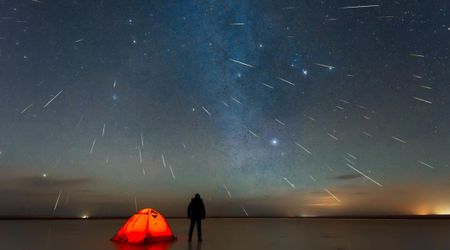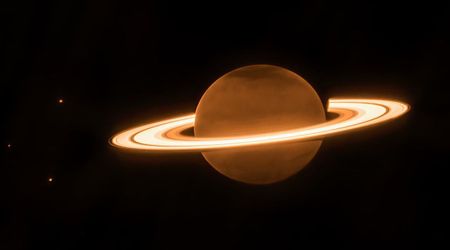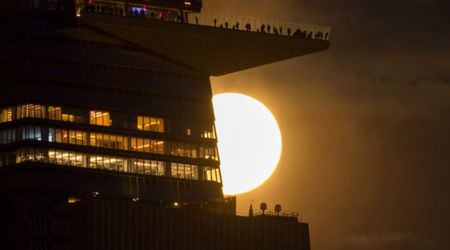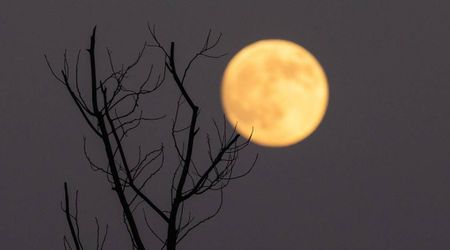stargazing date


Gazing up at the vast expanse of the cosmos is an experience that has inspired wonder and awe in humans since the beginning of time. And what could be more romantic than sharing that sense of wonder with a loved one on a stargazing date?
But how do you plan the perfect stargazing date? In this article, we'll go over the basics of creating a romantic and memorable stargazing experience for you and your loved one.
When in your relationship should you plan a romantic stargazing date?
Gazing at the stars with your special someone is extremely romantic, especially if one or both of you are into astronomy. However, it may not be the best idea for a date early in the relationship. For many people, especially women, going to a secluded location late at night with someone they don’t know well is a bit unnerving, to say the least.
So, consider how well you know each other and how safe each person will feel. It’s often better to wait on this particular date idea until you are both more comfortable with each other. Alternatively, a public stargazing/ astronomy event might allow for the potential of gazing at the stars far into the night with each other, while also feeling secure in the fact that there are other people close by.

Tip #1: Research ahead of time
As with stargazing in general, the key to setting yourself up for a romantic stargazing event is prep work. There are a number of different areas to research ahead of time to help this night be one your partner (and you!) will never forget.
Location
Scope out a location ahead of time, somewhere away from city lights and other light pollution, and it’s a good idea to test it out beforehand. Campsites and public parks, particularly state and national parks are often good choices. If you live in a rural area, your backyard might be a possibility. If you’re having trouble, reach out to your local astronomy clubs for suggestions.
If this is a long-term relationship and you are willing to travel to have the ideal stargazing experience, some of the best locations include the Natural Bridges National Monument in Utah, Hawaii, Aoraki Mackenzie International Dark Sky Reserve in New Zealand, the Atacama Desert in Chile, and Pic du Midi in France.
Time/ Date
Despite the nights being warmer, summer is actually not the best time to go stargazing as the nights will be much shorter and are more likely to be humid which will reduce visibility. You can do it in summer, but it will be more difficult.
Plan around the moon. A new moon is ideal, but the smaller the better as a full moon, while beautiful, will make stargazing more difficult due to the amount of light it puts out, blocking stars.
Use our moon phase calculator to plan ahead!
It will be a long, late night. Plan for at least an hour and a half after sunset, but the later the better as it will be darker, particularly during the summer months. It can be fun to watch the sunset together and watch as the stars slowly appear but plan for at least an hour and a half before decent stargazing begins. The stars also rotate through the sky throughout the night, so staying out as long as possible will let you see so much more.
Weather
Keep an eye on the weather in the days leading up to the event in the area where you will be stargazing. While rain is an obvious no-go for stargazing, so are clouds. There are a number of websites and apps that can help you with this information including the Clear Dark Sky website.
It’s often helpful to have a backup date and make a backup plan for the day of. Consider finding something that is still astronomy/star-related like a space movie, a planetarium show, an exhibit, etc. to stay on theme.
What will you be looking at?
While it is awe-inspiring and fun to simply gaze at the great expanse of stars above your heads, this can become overwhelming or even boring after a bit. Planning ahead by researching what will be visible that night or even the ideal night to go stargazing based on what will be visible will help you have a more fun, productive, and romantic stargazing date. You will get to guide your partner along, maybe even show off a little, and help the two of you find different points of interest.
What will be visible? And where in the night sky at what time?
- Planets and moons?
- Meteors (“shooting stars”)?
- Which constellations?
- The Milky Way?
- Deep Sky Objects?
There are a number of different stargazing/ night sky viewing guides available online or consider inquiring with your local astronomy clubs for the best options in your area at the time you want.

Recommended Gear for your stargazing date
Okay, so you’ve done your research. What gear should you bring with you?
- A telescope is the obvious ideal option, but not necessary so don’t worry if you don’t have one or don’t know how to use one.
- Binoculars are a great alternative to telescopes which are typically easier to find and use. Even a basic pair can often magnify up to 8x and can really bring your stargazing to another level for numerous objects.
- **Your naked eyes will still be able to see so much so don’t worry if you can’t get access to either binoculars or a telescope.**
- A camera and ideally a tripod to help catch steady photos of the night sky is a great addition to the evening. Do a little research and/or play with your device beforehand to help make things easier on date night.
- Headlamps, lanterns, flashlights, glow sticks, etc. are essential to help you see especially during set up and take down. Red light works best if possible as it will not ruin your night vision which is essential for stargazing. Many phones and other electronics have a red light setting or app nowadays and you can also DIY a red light filter by taping red cellophane over the light.
- Folding chairs can help especially if the ground isn’t great for sitting or lying on for hours.
- Bug repellant/ citronella torches or candles to keep those nasty pests from ruining your romantic night.
Additional Tips
- Dress for the weather, with extra layers like blankets, jackets, sweaters, and hats as even on a summer night, it can get cold when you are out for hours around midnight. Plus, who doesn’t love cuddling up with that special someone under a blanket to stay warm?
- Bring snacks and drinks, but make sure to keep them away from any gear to prevent messes and even damage. Make sure to bring water to stay hydrated, but also some fun options like coffee, hot cocoa, s’mores, or your favorite snacks. Or pack a whole picnic! Also, make sure to take out everything that you bring in so that you don’t litter. Bringing a garbage bag makes this easy.
- Set the mood with music if you want. Consider making a stargazing playlist to provide a nice background soundtrack during your stargazing, but be mindful of others if you are in a public place. You could also listen to some cosmic soundscapes created by NASA.
Have some tools handy to help aid in your voyage across the night sky such as stargazing apps already downloaded onto your phone, star maps, etc.

Stargazing activities for your date night
There are plenty of stargazing activities that can be a lot of fun, even romantic, that can keep you going for hours. However, consider your partner (and your preferences) to help create the best date night. Is either of you space nerds that would love to do a little experiment? Is either of you artsy or creative?
- Make your own shapes in the night sky by connecting stars like a connect the dot game. Constellations are simply stars that people long ago decided to connect to create shapes to tell stories from and navigate the night sky.
- Share some of the stories behind the constellations. Many are even love stories, though often they are tragic or a bit problematic in today’s age.
- The story of Perseus and Andromeda is often the go-to since it follows the typical ‘hero saves the girl storyline. You can find a short version of the story in this previous article under the Perseus/ Andromeda Family of Constellations section.
- The stars in today’s constellation of Orion are often associated with the pursuit of love in different ancient cultures. While the Greek myth has Orion pursue the Pleides Sisters (a nearby star cluster) so fervently that Venus turned them into doves so they could escape him, I prefer the Egyptian story of Osiris god of the underworld, and his wife Isis goddess of fertility, motherhood, death, rebirth, and more. Briefly, her search for her husband is immortalized in the night sky as the stars we now see as Canis Major chase after Orion and the Milky Way (which represented the Nile River) each night.
- Another story is related to the Coma Berenices constellation where Queen Bernice cut off her hair and submitted it as an offering to the gods for her husband’s safe return from war. When her husband returned, they went to retrieve her hair, but it was gone because the gods had accepted her offering and now it was among the stars.
- Yet another is of Orpheus and Eurydice in Lyra, the harp constellation. Their tale follows Orpheus as he attempts to bring his wife Eurydice back from the underworld with his harp, which he plays to help him in the trials of the underworld including helping him sneak past Cerberus the three-headed dog at the underworld’s entrance, depicted in the curve of Scorpius’s tail in the night sky.
- You can also find King Cepheus and Queen Cassiopeia, up in the stars together forever. It’s actually part of their punishment, but still kind of romantic.
- Make up your own stories for the shapes you found in the night sky. Maybe make them happier than the ones behind our constellations. Or write your own story in the night sky.
- Creating edible constellations. Bring pretzels and marshmallows to create the constellations and then eat them! Some of the more simple stickwork for the constellations like Ursa Major, the Little Bear/ Little Dipper, or even Centaurus, are great options, as well as the ones you created yourself.
- Oreo Moon Phases. Carve out the phases of the moon by scraping away the creme of Oreo cookies little by little for each phase.
- Create easy DIY star lanterns. Poke holes in a piece of black construction paper in the pattern of constellations and then attach them to the outside of mason jars. Adding a tea light or sand and a candle will create the lantern without causing fire safety issues.
- Sketch your view of the night sky or other space scenes.
- Write some poetry or a story inspired by the stars and other items in the night sky, the cheesier the better!
- Find your birthday stars. Your birthday star is a star that is far enough away that its light has taken as long as your life to reach Earth. So, if you are 25 years old, you would look for stars that are about 25 light-years away. There are different birthday star calculators to help you find the names and locations of stars that would fit this category.
We hope that this guide has given you a good outline and some ideas for an amazing, romantic date under the night sky with your special someone.
